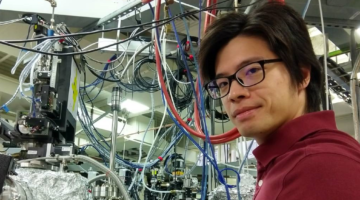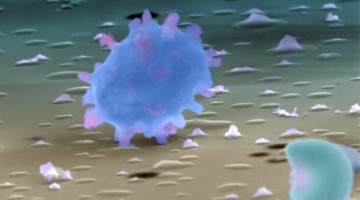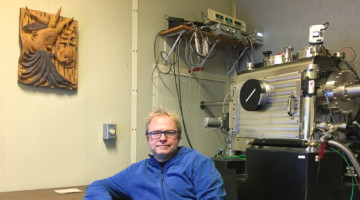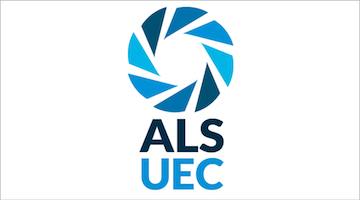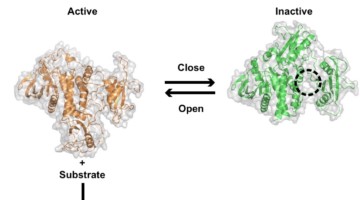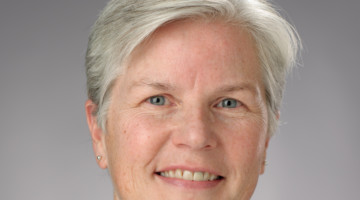Yu-Cheng Shao first came to the ALS in 2013 as part of a collaboration with Tamkang University. He returned last year as an ALS collaborative postdoctoral fellow working on Beamline 8.0.1 with Yi-De Chuang. Read more »
Salt in the Amazon Air Comes from Local Fungi
The abundant salt in the atmosphere above the Amazon basin has long been attributed to the Atlantic Ocean. But now, using the Advanced Light Source, scientists have found that much of it originates much more locally: fungal spores in the rainforest. Pinpointing the origin will improve climate models and understanding of rainforest ecosystems. Read more »
The Fusion of Art and Physics
As part of a project bringing together local artists and physicists, ALS Staff Scientist Henrik Ohldag has been paired with sculptor Brad Burkhart to see what the result would be if x-ray microscopy and clay sculptures are combined. You are invited to visit the Advanced Food Source snack bar on the first floor of Building 80 to suggest a name for a piece by Burkhart. Another piece, “What’s your sign?” has been installed at Beamline 11.0.2 at the ALS. For more information, contact Hendrik at hohldag@lbl.gov. Read more »
UEC Chair Fanny Rodolakis
Fanny Rodolakis, the chair of the Users’ Executive Committee (UEC) for 2019, gives a preview of the UEC’s plans for the year, including the User Meeting. The UEC encourages users to submit general feedback and suggest speakers for this year’s User Meeting. Read more »
Maggie Zhuyun Xiao Awarded Best Student Presentation
Congratulations to Maggie Zhuyun Xiao, who earned the award at the Joint MMM-Intermag Conference for her presentation, “Single Domain Magnetoelastic Terfenol-D Microdisks for Particle and Cell Manipulation.” Maggie is an ALS Doctoral Fellow in Residence working with ALS Senior Scientist Elke Arenholz.
ALS in the News (January 2019)
- Drug Sponge Could Minimize Side Effects of Cancer Treatment
- Nanocrystals Get Better When They Double Up With MOFs
- Researchers Identify Openings for Shuttering Virus Factories
- Revealing Hidden Spin: Unlocking New Paths Toward High-Temperature Superconductors
- Scientists Program Proteins to Pair Exactly
- Researchers Use Jiggly Jell-O to Make Powerful New Hydrogen Fuel Catalyst
- Surprising Electronic Disorder in a Copper Oxide-Based Ceramic
Locking Protein Structure to Close the Door on Cancer
While the SHP2 protein helps regulate cellular activity, mutations in its structure can lead to cancer. X-ray crystallography at the ALS and SSRL has revealed differences between normal and mutated SHP2, as well as how it binds to certain cancer drugs. These structural insights open the door to new types of cancer therapy. Read more »
14-Day Notice Required for User Arrivals and Allowable Visa Types for Experimental Work
All users of the ALS must register in the ALSHub at least 14 days prior to their arrival date to provide required information (including visa type, if applicable). This allows enough time for pre-check-in processing and review. Read more »
Robbie Leftwich-Vann, ALS-U Project Manager
Robbie Leftwich-Vann came to Berkeley Lab with years of experience with NASA and the aviation sector. She is focused on building the infrastructure and setting up the tools for the ALS-U team to succeed—enabling the project to take flight. Read more »
March 6 Deadline for General User Proposals
The User Office is accepting new General User Proposals (GUPs) from scientists who wish to conduct research at the ALS in the 2019-2 (July–December) cycle. The deadline for submissions is March 6, 2019. Applicants are reminded that they may request joint access to the Molecular Foundry, a nanoscience user facility at Berkeley Lab, to support their ALS activities. Read more »
